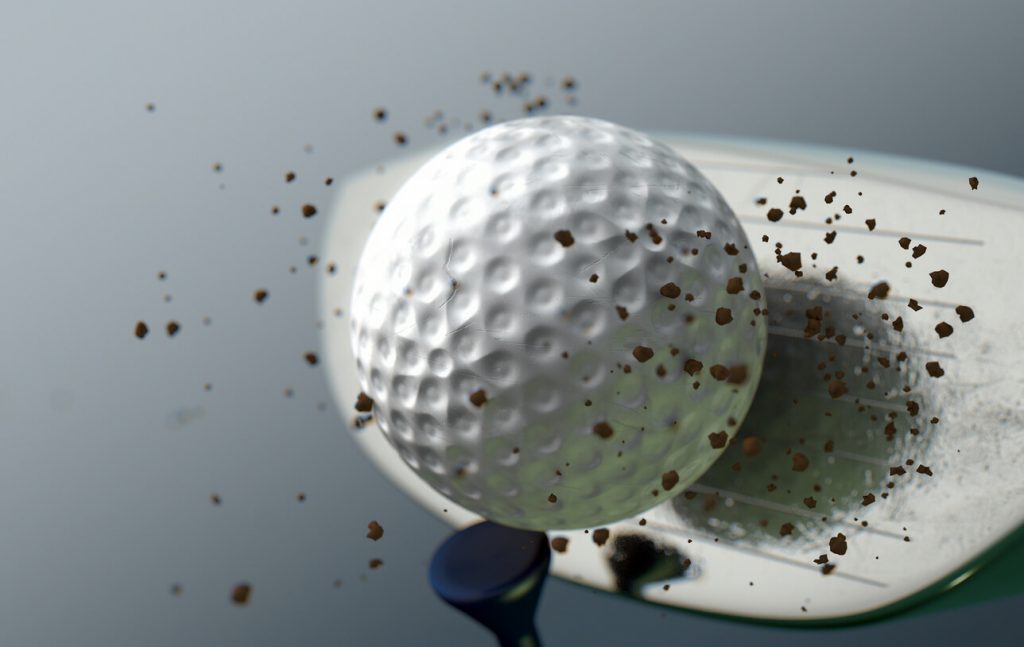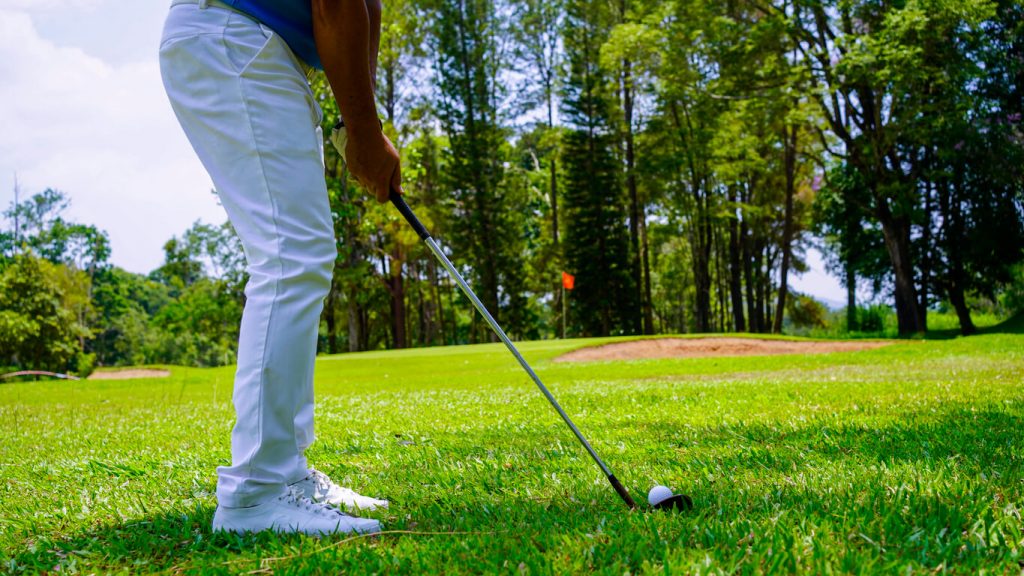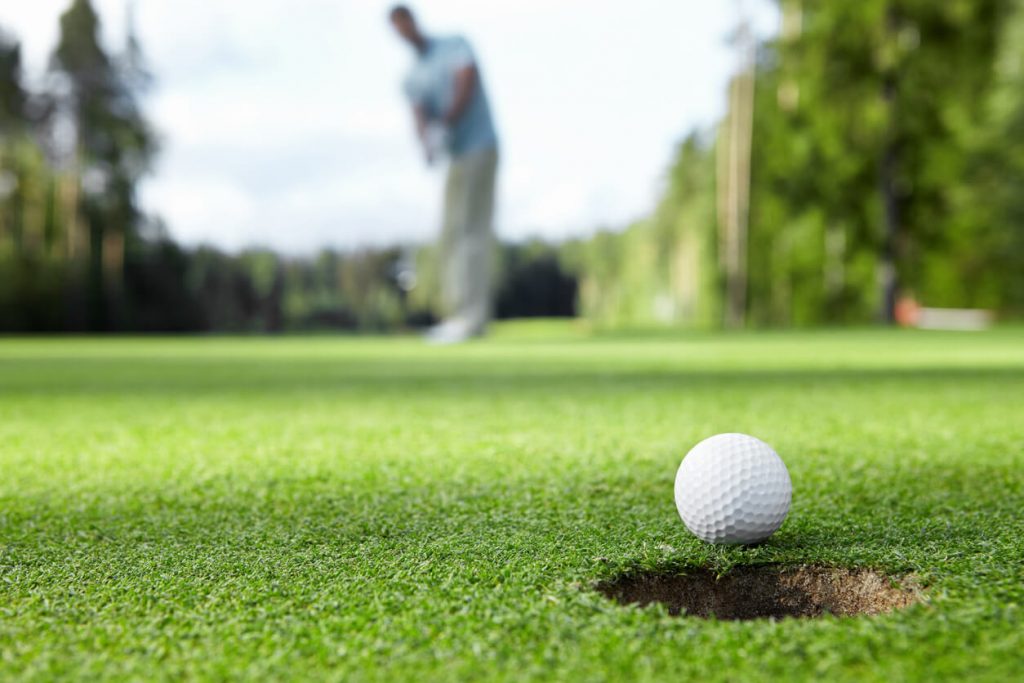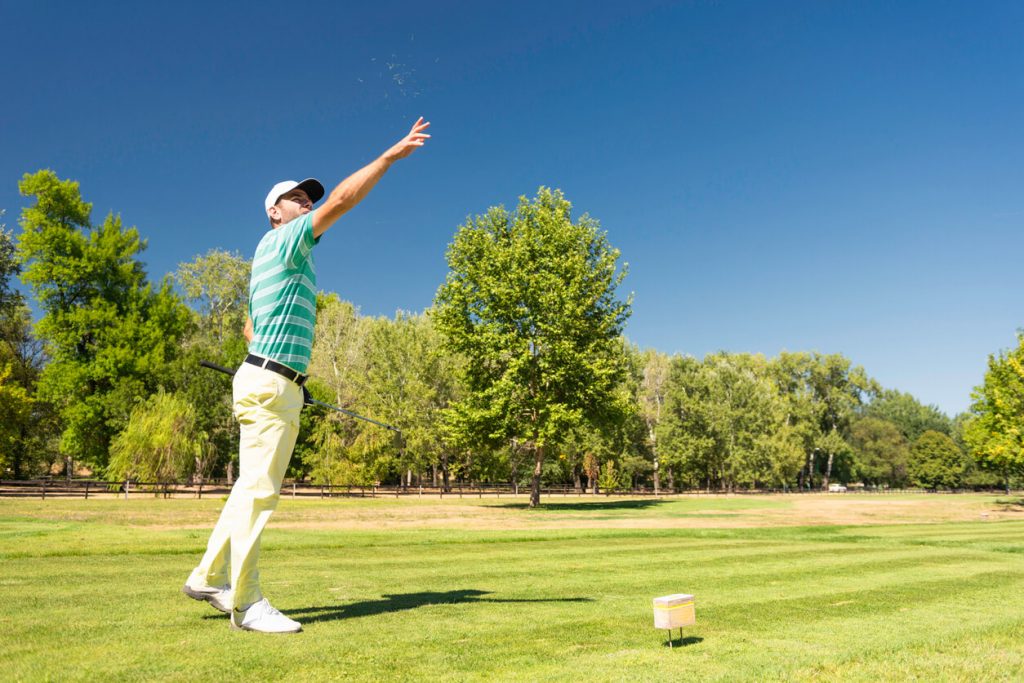How to put backspin on a golf ball

As golfers, we often want to put backspin on our shorter
shots to help us control our distance and get us up and down—particularly when
we’ve got the wedge in our hands.
When hitting shots, a small amount of backspin is required
to keep the ball in the air. However, too much backspin will hinder our yardage,
increase the height of the ball, and reduce the amount of forward roll. And, of
course, we don’t want any spin (be it backspin or sidespin) when we’re hitting
a driver.
Finding the right balance can be tricky, but knowing how to put backspin on a golf ball is an essential skill that you’ll use time and time again out on the course—so it’s well worth your precious practice time.
If you’re on a launch monitor, an optimal spin rate would be between 2000-3000 RPM for most players. So, how do we go about it? Read on for our tips to get you started.
How to put backspin on a golf ball
1. Use the right equipment

We have to clean our grooves before we do anything else.
Think about all the spin we got when we first bought our
wedges compared to now. The grooves were fresh and free of dirt, and the spin was
probably unrecognisable compared to now.
We want friction between the clubface and ball, but dirt
reduces the friction and, hence, the resulting spin. A newer wedge will spin
more than an old one, which is why the pros will often change theirs, but most
of us can help ourselves by better looking after what we’ve got.
So, always have a wet towel and a wire brush to hand to get into the grooves after every shot.
2. Use the right ball


There’s a reason premium golf balls are so good for our game.
They offer great distance, spin, and feel around the greens.
Titleist and other leading golf brands will fit for a ball, starting with wedges and working backwards. A softer ball will grip more onto the clubface, while harder balls won’t maximise our spin. Most golfers are more interested in getting as much distance off the tee as possible and, therefore, play with a harder ball, but if we play a softer ball instead, we can expect to get more spin around the greens.
Modern-day premium golf balls are designed with multi-layer
construction and a soft urethane cover to enhance the grip between the clubface
and the ball. They also offer a more moderate level of spin for mid-iron shots and
low spin for the driver. The most popular balls on Tour are the Titleist Pro V1
and Pro V1x. The Pro V1 is known to have a slightly lower spin off the tee
compared to the Pro V1x but has excellent greenside control. Meanwhile, the Pro
V1x provides more spin on mid to long-iron shots for players who want a higher
trajectory and stopping power.
Related: How to choose the right golf ball
3. Employ the right technique


Every shot has spin; it’s just the amount of spin that is
different. To put backspin on a golf ball, we need the right amount of loft,
which means we don’t want the ball back in the stance, as this will de-loft the
shot—and we don’t want to add too much loft, as we’ll lose friction on the
ball.
The shaft angle needs to be straight to our body, with the
butt of the club pointing at our belly button, or with a very slight amount of
forward lean. We also need to have the ball in the middle of a narrow stance.
We don’t want to take a large divot either—instead, we’re looking for a
relatively shallow divot. Apply slightly more weight on your lead side and
rotate your body as you would on a full shot.
There’s no real secret to this shot, but the strike is a key factor in generating backspin, so think about rotating around your lead side.
Speed is also crucial here. If you have a 30-yard pitch, you’re not going to be able to create much backspin, if any at all. However, if you have a 70-yard pitch, there’ll be more speed and, therefore, more spin.
4. The right lie


Lie is another important factor in putting backspin on a
golf ball. The tighter the lie, the better it is to create spin. On Tour-level
rapid greens, being able to find the fairways is massive, as that’s where the
pros are pretty much guaranteed to get the perfect amount of spin on the ball.
That said, however, in the modern game, great golfers can still get plenty of spin from the semi-rough thanks to their strike, equipment, and ball—but, for our purposes, backspin is only likely to come from the ‘short stuff’.
So, factor this in, and when you’re in the rough, expect a
less clean strike and more run, as there’ll be more grass between the club and
the ball.
Related: Why does loft and lie matter?
5. Apply the right grip pressure
Short-game specialist Dan Grieve talks about this a lot and is a huge advocate of a lighter grip around the greens.
“If you get tight with the grip, the ball will jump off, and I really think 99% of amateur golfers grip it way too tight. If I’ve taught tens of thousands of golfers, I don’t think I’ve ever told anybody to grip it tighter, ever. So I think grip pressure is huge.”
6. Use the conditions to your advantage


Of course, an element of luck is involved here, but spin
will generally increase when we’re playing the ball into the wind. So, when we
have a 90-yard shot into a 20mph wind, for example, we should expect the ball
to stop pretty quickly or even spin back with the right execution.
On the other hand, when we’re playing a shot downwind, spin
will reduce, so we need to factor in more run.
Similarly, receptive greens will encourage our ball to spin more so keep this in mind, too. If the green surface is similar to that of a links course, we shouldn’t expect to see our ball checking up, either.
All in all, learning how to put the right amount of backspin on a golf ball can take time and a lot of practice, but by thinking more about the factors outlined in this article, you’ll be well on your way to getting started. So, what are you waiting for?
Whether you’re just starting to learn how to put backspin on a golf ball or you’re already a master of the art, you might want to consider protecting yourself and your equipment with specialist golf insurance if you play the game regularly.
With Golf Care, policies include Equipment Cover up to £7,500, Public Liability of up to £10m, and Personal Accident Cover up to £50,000. Click on the banner below to learn more and get a quote.









